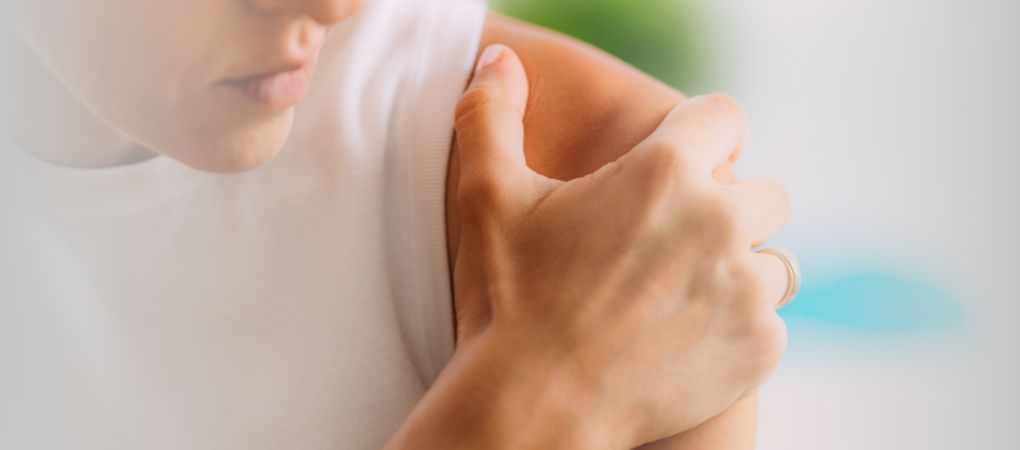Francesca Galiano
|
18/08/2023 - Last update 15/11/2023
Mark W. Morningstar, Megan N. Strauchman | Year 2022
Manipulation Under Anesthesia and Prolotherapy for Adhesive Capsulitis and Rotator Cuff Tear: A Case Report With 7-Year Follow-Up
Pathology:
Adhesive capsulitis and/or frozen shoulder
Type of study:
Case Report
Date of publication of the study’:
2022/Dec/01

Purpose of the study
- Objective: to show the management of a patient with adhesive capsulitis and rotator cuff tear using manual therapy, anesthesia and prolotherapy with long-term follow-up
- Measured outcomes: assessment of pain and range of motion (ROM)
Participants
- Number: 1
- Description: a 50-year-old male with a 6-month history of right shoulder pain, unsuccessfully treated with chiropractic, physiotherapy and intra-articular steroid injections. The patient could neither sleep nor work because of the pain as it was of a very high intensity, 77 out of 100 on Numeric Pain Rating Scale (NPRS). His range of motion was restricted in all planes, and pain radiated along the medial border of the right scapula, right scapula spine, acromioclavicular joint, and to the humeral insertion site of the supraspinatus. He was initially prescribed hydrocodone every 8 hours. However, in 2014, after an MRI revealed an adhesive capsulitis with infraspinatus tendon lesion and degenerative changes of the glenohumeral joint, it was decided to apply a series of manipulations under anesthesia.
Interventions and evaluations
- Evaluation of pain and ROM
- Treatment program including manipulation under anesthesia, drugs, physiotherapy, prolotherapy
- 3 manipulation sessions under anesthesia over 3 days according to the following guidelines:
- after the first manipulation, others are NOT to be performed if:
- no functional or subjective improvements are observed
- there are improvements of 80% or more
- after the first manipulation, others are NOT to be performed if:
- 2 sessions per week for 4 weeks of physiotherapy
- 6 prolotherapy injections in 8 weeks
- 1 injection every 4 weeks for the first 4 weeks and 1 injection every two weeks for the last 4 weeks
- 1 mL of hydroxocobalamin at 1 mg/mL, 6 mL of 5% dextrose solution, and 3 mL of 1% lidocaine at 10 mg/mL
- Manipulation under anesthesia:
- propofol injection
- techniques used: passive stretching up to the elastic limit of movement of the glenohumeral joint and joint mobilizations at low velocity and moderate amplitude, adapted to the patient to prevent any damage; distractions to promote ROM and reduce any fibrous adhesions; scapula manipulation
- Physiotherapy
- cryotherapy, massage and light stretching in the first week
- active exercises to improve ROM in the other weeks
- Manipulations performed in turn by an osteopath and a chiropractor (one stabilized the patient while the other performed the technique) certified to perform manipulations under anesthesia
Results
After the third manipulation under anesthesia, the patient was administered ibuprofen every 6 hours to modulate the inflammation and avoid the formation of fibrous adhesions in the shoulder. By this time, the pain had already decreased to 37 out of 100 on NPRS. The ROM of the right shoulder was almost completely recovered, except for pain in external rotation and in abduction.
After physiotherapy, the pain was felt only during external rotation. The patient then started prolotherapy injections to treat the infraspinatus injuries. The last injection was in December 2014. At the follow-up in January 2015 the pain had decreased to 11 out of 100 and the active ROM of the shoulders was normal and symmetrical.
Since then and up to December 2021, the patient has returned to the clinic 9 times for simple manipulations with mild musculoskeletal symptoms unrelated to the right shoulder. At the last visit, the patient reported that he was pain free, slept well and was able to move freely.
Discussion
This is perhaps the first study where manipulation under anesthesia was used in combination with prolotherapy for a case of adhesive capsulitis and rotator cuff tear.
Manipulation under anesthesia has always proved to be quite safe in the case of adhesive capsulitis, with a low rate of complications (among which, however, we must remember humerus fractures, glenohumeral dislocation, rotator cuff tears, glenoid fractures, injuries to the brachial plexus, hematomas). However, compared to arthroscopic capsular release, manipulation under anesthesia has been shown to require a lesser use of steroid
According to the authors, the patient initially suffered from rotator cuff tear, which then evolved into adhesive capsulitis due to an incomplete healing process. Despite the results, the type of study prevents the drawing of generalizable conclusions. In this regard, the placebo effect cannot be excluded, nor the fact that the patient retired during the follow-up, which may have helped the recovery. Further and larger studies are therefore needed.
The review of Osteopedia
By Marco Chiera
Strengths: multi-therapeutic approach to a difficult and chronic problem; good presentation of the clinical case; very long follow-up.
Limits: like any case report, it is difficult to generalize the results; given the different therapies used, it is not easy to evaluate the contribution of each individual therapy.
Whenever there is talk of adhesive capsulitis and/or frozen shoulder, it would be appropriate to devote more attention to its physiopathology since if on the one hand we have adhesive capsulitis with actual tissue alterations, on the other hand we can have “purely” neurogenic frozen shoulders. Paying attention to this aspect is essential precisely in the case of interventions such as manipulation under anesthesia, as anesthesia acts on the nerves, but not on tissue alterations.

Are you an osteopath?
Register and enjoy the membership benefits. Create your public profile and publish your studies. It's free!
Register now
School or training institution?
Register and enjoy the membership benefits. Create your public profile and publish your studies. It's free!
Register now
Do you want to become an osteopath? Are you a student?
Register and enjoy the membership benefits. Create your public profile and publish your studies. It's free!
Register now







